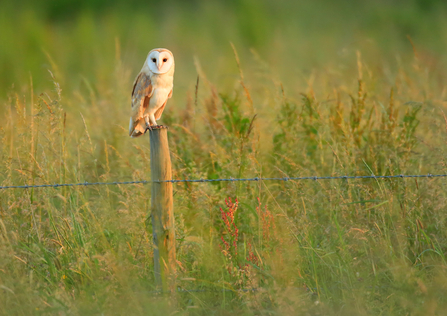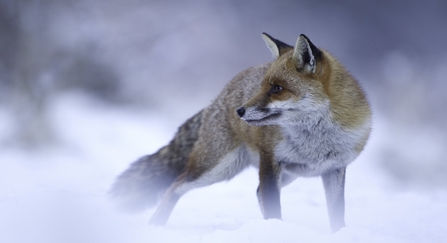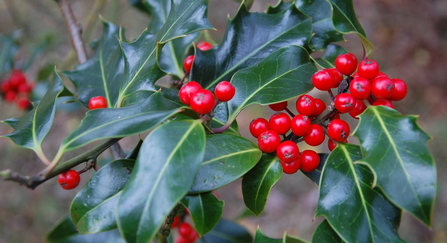Sight is our primary sense, befitting our evolution as diurnal omnivores. We see in colour, with reasonable acuity, and have been smart enough to invent binoculars too. There’s no excuse not to make the most of our eyesight to appreciate the glories of winter. My favourite visual treats: the ash and blonde colouring of a barn owl’s wing, red holly berries on a frosted hedge, a swirling hypnotic mass of murmurating starlings, low evening light across Whixall Moss as the sun sets in glory, a black sky studded with myriad stars, and the untouched beauty of a field covered in pristine snow at dawn.
Dr Cath’s Nature Notes – Using Your Senses

Jon Hawkins - Surrey Hills Photography
Hearing is our second sense for nature watching. How often are you alerted to a different bird by an unfamiliar call, or the presence of some creature by a noise off to the side? Unfortunately, as we grow older, our hearing deteriorates and we lose the ability to hear high-pitched sounds such as bats and goldcrests, but there are still plenty of auditory joys to be had, even in winter. Here are mine: a robin singing its wistful winter song from a bare tree, wigeons whistling down to their grazing grounds, the distinctive ‘plop!’ of a diving water vole, the squeaky bickering of argumentative shrews under the wood pile and the crackling of an apple-wood fire on a cold, sharp night.
Gillian Day
Scent is probably the third most important sense, though one all too often neglected. Smell can be important for survival, perhaps telling you if food has gone off, but it can also be highly evocative, triggering memories of places and times past. My chosen scents for December: the quick reek of fox at a gap in the hedge which tells that a fox has passed through in early morning, the clean sharp smell of a frosty morning when your breath hangs in the air, the warm dark smell of forest floor duff as you kick through fallen leaves, the fresh smell of wood when I chop logs for the fire, and the wonderful aroma of roasting chestnuts when I enjoy the stored treasures of autumn foraging!

Red Fox (c) Danny Green/2020VISION
Very few of us consciously wander through the countryside feeling nature, but do have a go. Texture is a wonderful road to relating to wild life. My best ‘feely things’ in nature: a smooth beach pebble bringing back the ages it spent being rounded and polished by the waves (I often have a small one in my pocket from my last trip to the shore!), beech bark smooth and grey as a young elephant, soft fat damp cushions of moss yielding under my touch, the cold thrill of a feather-like snowflake landing on the palm of my hand and melting there, the soft wool comfort of my favourite mittens keeping the cold from my hands, and the silky smoothness and sharp prickle of holly leaves when I’m gathering Christmas decorations.

Scott Petrek
Taste is probably the least-used sense for nature watchers. Modern western civilisation is far too afraid of poisoning and germs to encourage us to nibble and lick our way through the countryside, but watch how young children explore a strange new thing – often it goes straight in the mouth. Darwin himself realised the importance of taste as a way on experiencing and engaging with nature (remember the story about the beetle?) and as long as we avoid the few deadly poisonous species in Shropshire, there’s no reason to miss out. My top tastes for winter time: a falling snowflake on my tongue, sweet rainwater running down the bark of a birch tree, a musty nibble of the kind of lichen that hangs from trees where the air is really clean, the iodine tang of a little piece of seaweed during a coastal winter walk, the frost-mellowed sweet-sharp taste of a rosehip – you can still find perfect ones even in December, and, of course, the first savour of a big mug of fragrant, freshly brewed tea when I get in after a chilly walk on a frosty day.
I’m sure you’ll have your own favourites, or things that you haven’t even realised are favourites yet. Go a bit wild by experiencing nature with all your senses, and find out just how rich it can be.

